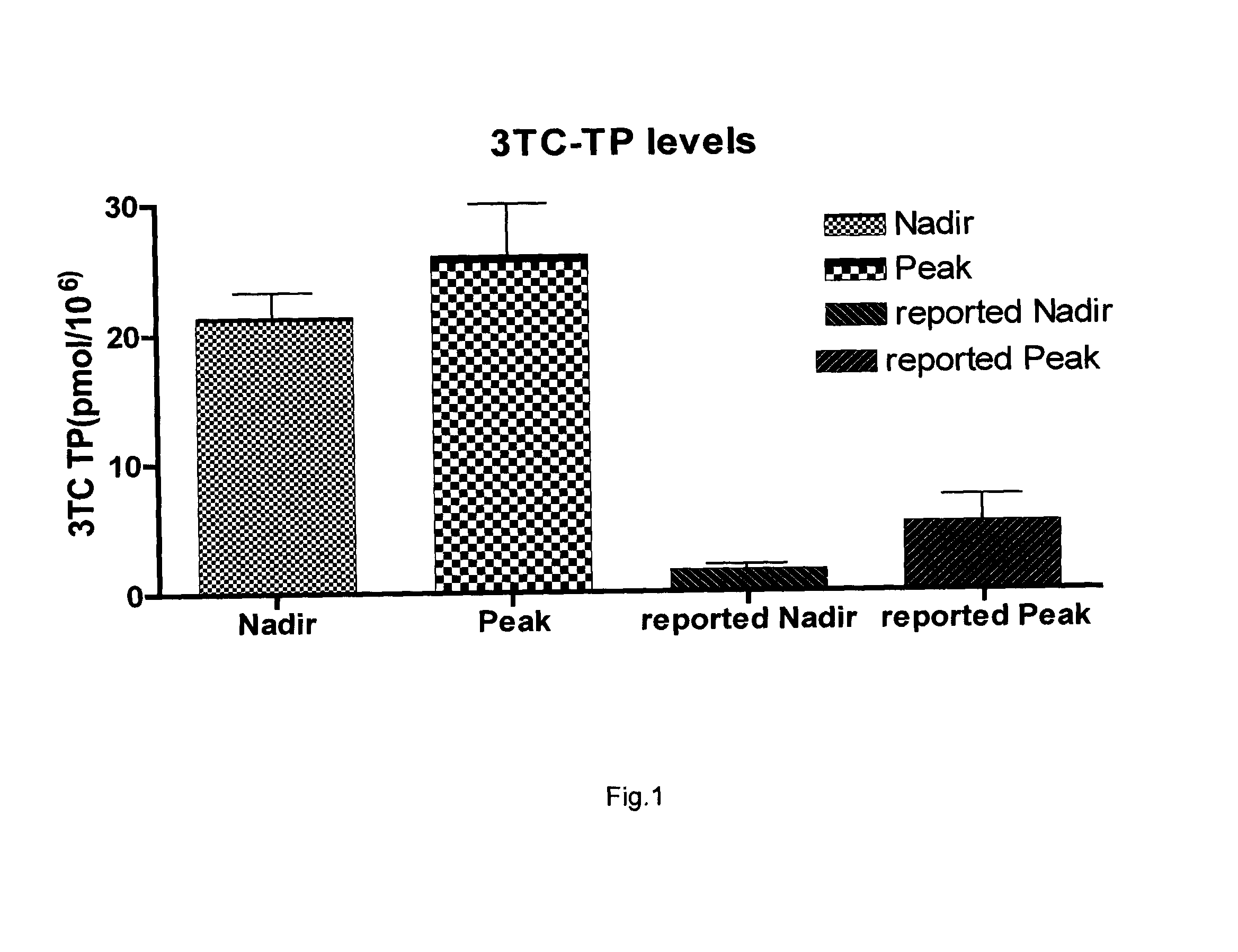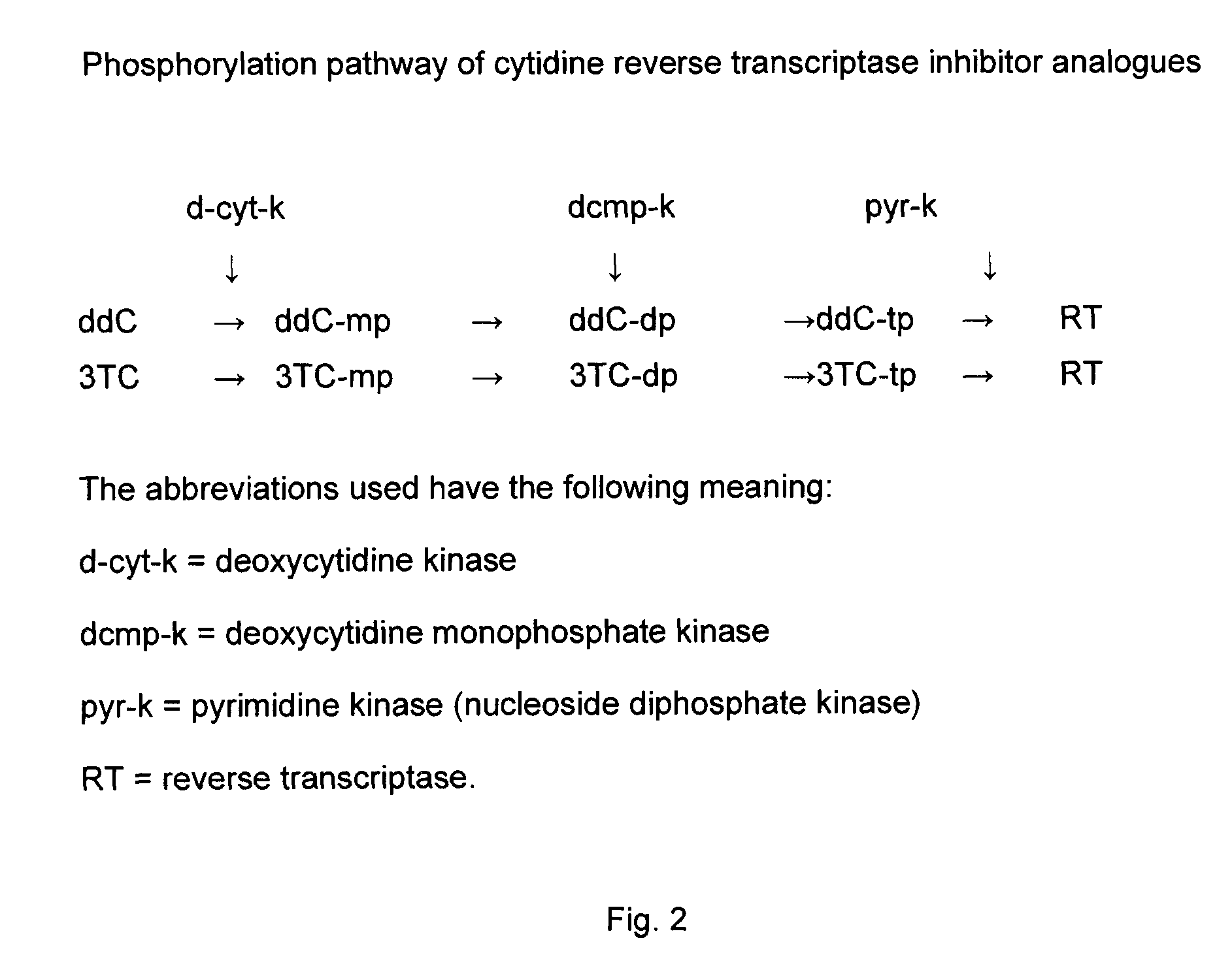Zalcitabine (Ddc) Boosted Lamivudine (3Tc) Compositions for Antiretroviral Therapy
a technology of lamivudine and compositions, which is applied in the field of boosting lamivudine (3tc) compositions for antiretroviral therapy, can solve the problems of increasing the emergence of adverse effects, dna chain termination, and consequent inhibition of hiv replication, and achieves the improvement of 3tc antiretroviral activity, boosting the activity of 3tc, and reducing the susceptibility or suboptimal virologic control
- Summary
- Abstract
- Description
- Claims
- Application Information
AI Technical Summary
Benefits of technology
Problems solved by technology
Method used
Image
Examples
example i
[0036]Zalcitabine in a daily dosage of up to 0.75 mg was used in combination with 3TC and another antiretroviral for the treatment of HIV infection. The reason to combine the reduced dose ddC with 3TC was to increase the active form and, consequently, the antiretroviral activity, of 3TC. This combination was named > 3TC.
[0037]> in combination with indinavir optimally controlled the HIV infection in a patient with an AIDS-defining infection (toxoplasmosis). When abacavir (an NRTI) was substituted for indinavir (a protease inhibitor) this effect continued to be optimal (HIV viral load below the level of detection, i.e. <50 HIV-1 RNA copies / ml). Moreover this effect is sustained in time for more than 7 years. If we consider the zalcitabine-boosted 3TC as a single drug (the effect being due to 3TC quasi-exclusively), its combination with abacavir represents only a dual not a triple therapy. This effect was not described in patients with advanced HIV infection. In addition, this regimen ...
example ii
[0039]The use of 3TC in combination with ddC was formally contraindicated since 1996 when it was shown that 3TC inhibited ddC phosphorylation in a concentration-dependent manner at identical concentration ratios of 10 to 100 μM (Veal G J, Hoggard P G, Barry M G, Khoo S, Back D J. Interaction between lamivudine (3TC) and other nucleoside analogues for intracellular phosphorylation. AIDS 1996, 10: 546-548). This level of inhibition was much greater compared to the effect of ddC on 3TC phosphorylation. While ddC did inhibit in vitro 3TC phosphorylation, this occurred at extremely high concentrations of ddC (10 to 100 higher than those of 3TC) (Veal G J et al., 1996; Kewn S, Veal G J, Hoggard P G, Barry M G, Back D J. Lamivudine (3TC) phosphorylation and drug interactions in vitro. Biochem Pharmacol 1997, 54: 589-595). This is unlikely to occur in clinical practice, because the 3TC plasma levels are much higher than those of ddC (e.g. 5 μM vs. 0.5-1.5 μM).
PUM
| Property | Measurement | Unit |
|---|---|---|
| Mass | aaaaa | aaaaa |
| Mass | aaaaa | aaaaa |
| Mass | aaaaa | aaaaa |
Abstract
Description
Claims
Application Information
 Login to View More
Login to View More - R&D
- Intellectual Property
- Life Sciences
- Materials
- Tech Scout
- Unparalleled Data Quality
- Higher Quality Content
- 60% Fewer Hallucinations
Browse by: Latest US Patents, China's latest patents, Technical Efficacy Thesaurus, Application Domain, Technology Topic, Popular Technical Reports.
© 2025 PatSnap. All rights reserved.Legal|Privacy policy|Modern Slavery Act Transparency Statement|Sitemap|About US| Contact US: help@patsnap.com


